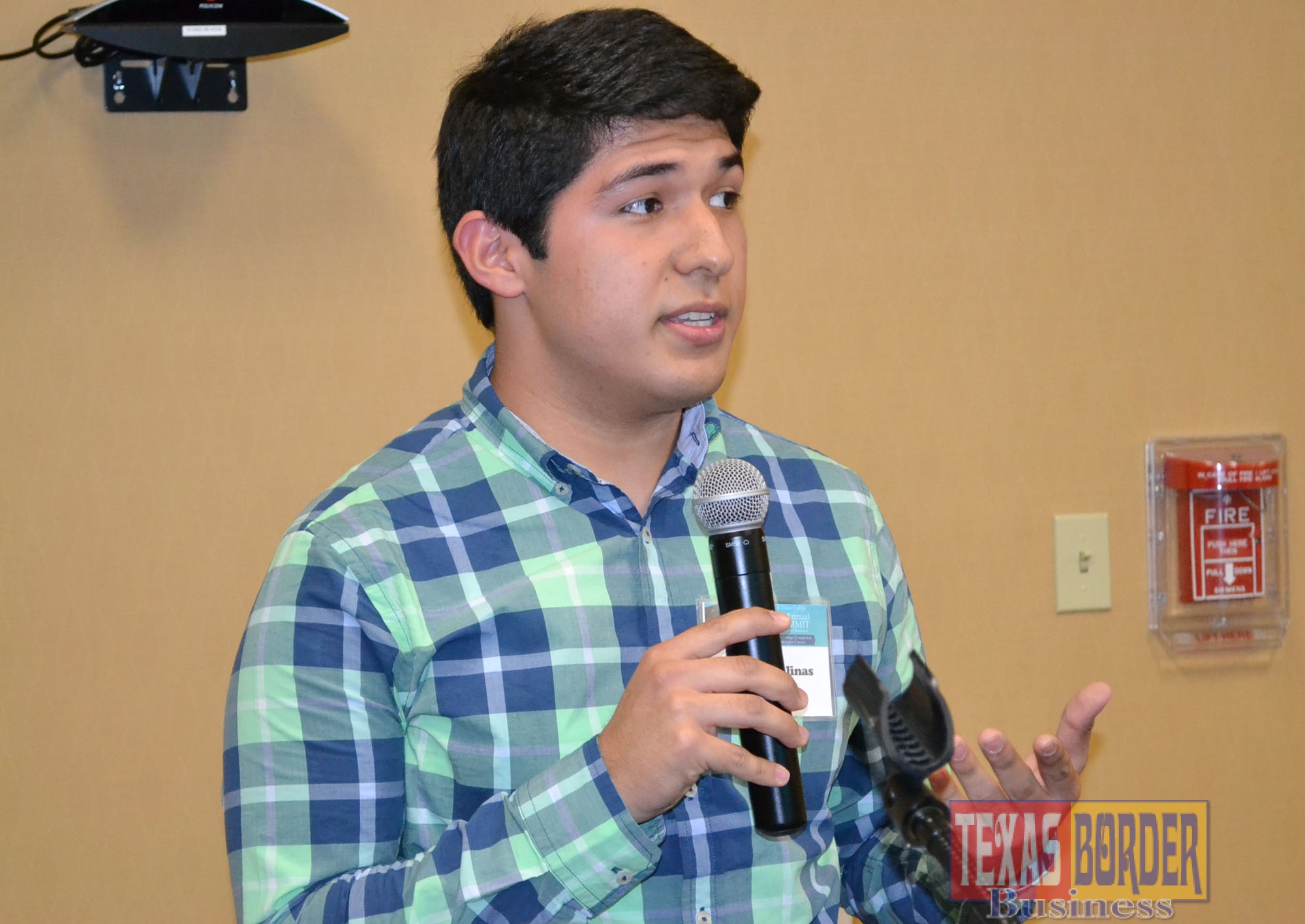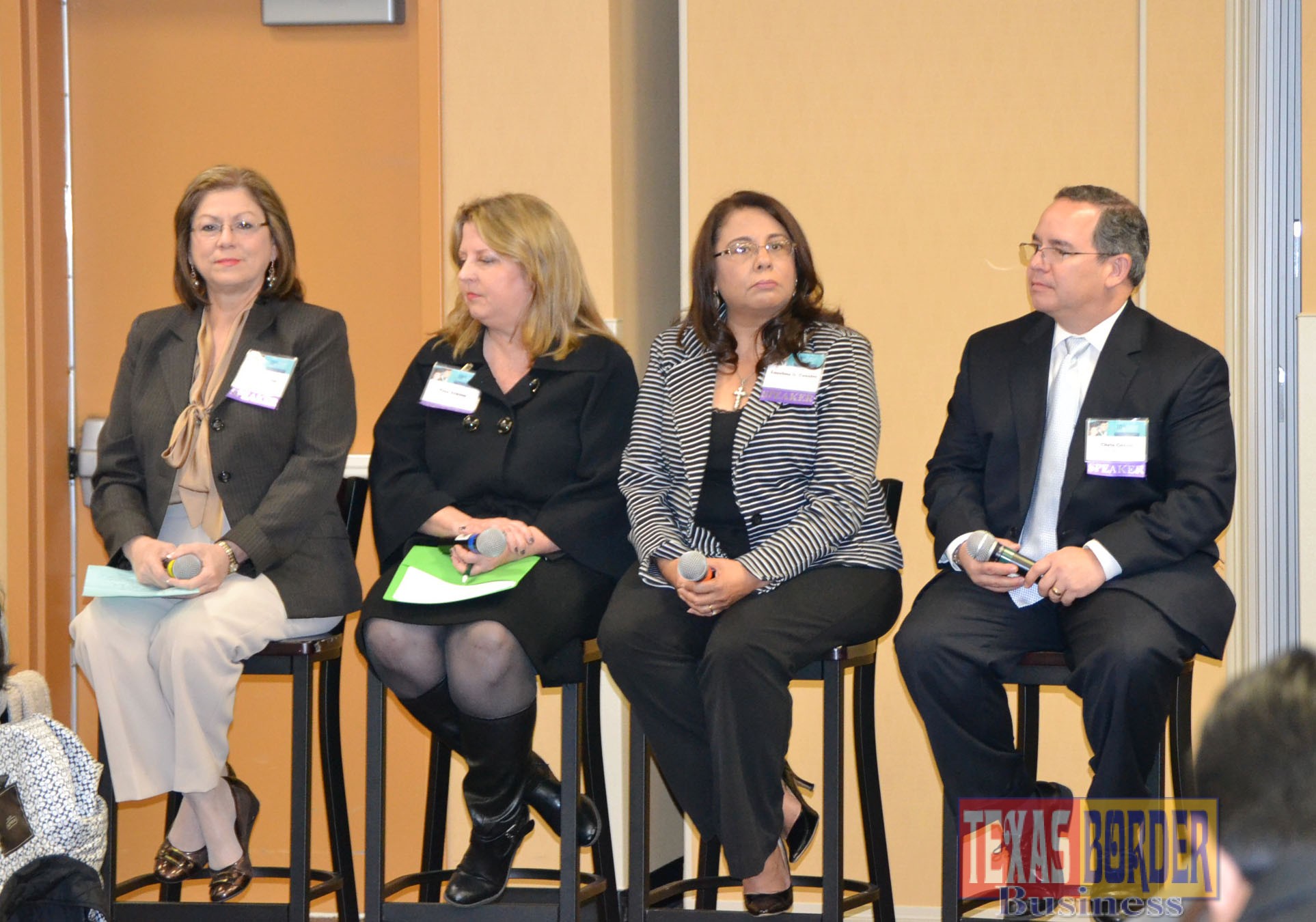
Texas Border Business –
Donna High School senior and valedictorian candidate Michael Salinas stood nervously at the podium before a roomful of Rio Grande Valley educators at the South Texas College Summit on College and Career Readiness on Feb. 23.
He went on to tell them about his educational journey as evidence of the collaboration that has been achieved between educational institutions across the Valley over the past decade.
In addition to graduating with his high school diploma later this year, Salinas will receive an associate degree through the STC Dual Enrollment Computer Science Academy. He’s also been accepted to Texas A&M University and the University of Texas-Austin to continue to pursue his education.
“My mom raised us by herself and we struggled financially, she’s been my inspiration,” Salinas said. “Education has been extremely important to me and it goes back to a grade school teacher who taught me to be the best that I can be, and not to settle for just anything. STC’s Dual Enrollment Computer Science Academy challenged me and I would tell other students to try it.”
Salinas’ experience concluded a series of presentations and sessions that included dual enrollment and early college high schools among the hot topics discussed at STC’s 10th Annual College Summit at Region One in Edinburg.

“Michael’s story is one of thousands here in the Rio Grande Valley and this year’s summit isn’t just about being ready for college, it’s going to college and more importantly, completing college and being on a path to a meaningful career,” STC President Dr. Shirley A. Reed said. “We’ve heard great data on the progress we’re making and everyone has the sense that no one could do this alone. It’s just the magic that comes from working together and having confidence in each other that leads to incredible success stories.”
“When we started South Texas College, we had nothing,” added Reed. “We had to reach out to everybody and anybody that would work with us and be a partner. That has just become a part of how we’ve grown and developed the college. I think it’s also very cultural to our region and the focus on family. Those of us who are in education, whether public schools or university, we are one big family and we are committed to the success of our students.”
Dual enrollment and early college high schools have been the catalyst for the success that education in the Valley has experienced, and been a model for the rest of the state, as well as the nation.
STC has partnerships with 26 school districts in the Valley with 13,305 dual enrollment students taking college-level courses. Since 2004, 27 early college high schools have been established by Valley school districts, making up 25 percent of all early college high schools in Texas.
In 2014, STC was ranked second in the nation in enrolling Hispanic undergraduates and fourth in awarding associate degrees, according to Excelencia in Education.
“Ten years ago 50 percent of students entering college had to take developmental or remedial studies, but today that’s down to 14 percent and that really is a testimony of the work being done in our public schools,” Reed said. “Not only are more students going to college, they are better prepared for college and I believe the early college high schools and dual enrollment have been catalysts for improving college readiness.”

The topics discussed during the summit ranged from how to improve Hispanic student success and collective impact to House Bill 5 (HB5) and the Texas Success Initiative (TSI), among others.
“The summit has been an exemplary model of bringing together different groups like school districts, universities and non-profits,” Educate Texas Chief Program Officer Chris Coxon said. “We’re recognizing the work that’s been done and seeing who’s doing it better than others so that we can continue to learn from the different models and implement them where they are needed to benefit our children.”
“More than 60 percent of the jobs today require a degree or a certificate of some kind, and the students that have a higher education will earn $1 million more during their career than those that don’t,” he concluded. “Seeing the development in the Rio Grande Valley and on the other side of the border, we know that a lot of new jobs are coming. Not all jobs will require a four-year degree, but they are jobs that will require some form of higher education.”
Additional resources:
Excelencia in Education: https://www.southtexascollege.edu/summit/presentations/s.brown_presentation_collegecareer.ppt
RGV Focus: https://www.southtexascollege.edu/summit/presentations/RGV-Focus.pdf
New Mathways Project: https://www.southtexascollege.edu/summit/presentations/getz_presentation.pptx
Pathways to College Completion and Meaninful Careers
Helping Students Find the Best Academic Pathway to a Successful Career















